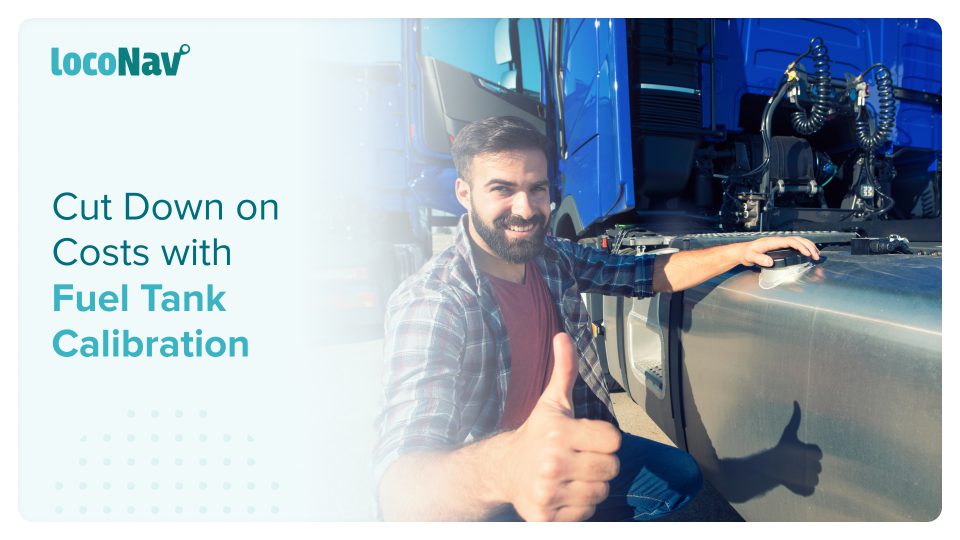

The fleet industry has always had fuel as the major contributor to operational costs. Lately, the rising prices of fuel have been a major source of distress globally. With the price of fuel fluctuating so rapidly each week, proper estimation of fuel tanks at service stations and businesses is critical to minimizing fuel loss. Compliance is also important, with businesses ensuring that they are following best practices to avoid problems with local regulations regarding leak detection and safe fuel storage.
This is where fuel tank calibration comes in. In this blog, we will highlight the key concepts around fuel tank calibration, including what it means, how it is performed, and the common challenges associated with it.
What is Fuel Tank Calibration?
First and foremost, let us understand what exactly is calibration? Simply put, it is the scientific method of finding the precise true volume of a containment system for a given measurement value. It is critical for obtaining precise quantity measurements. Even the best-gauging systems and the most precise manual measurements are useless without accurate calibration technology.
Fuel tank calibration guarantees that safe fills and storage capacities are true and accurate. Ensuring high levels of measurement accuracy assists you in maintaining tank confidence and avoiding costly errors.
Manage your fleet efficiently with LocoNav’s Fleet Management Solutions!
How Does Fuel Tank Calibration Differ from Sensor Calibration?
- Sensor calibration is a correction or set of tweaks performed on a sensor or instrument to ensure that it operates as accurately and without error as possible.
- Fuel tank level calibration is the process of accurately determining a tank’s capacity or partial capacities and displaying this capacity as a volume for a given linear increment of liquid height.
Why is Tank Calibration Necessary Before Refueling?
Calibration is the science of determining the precise true volume of a containment system for a given measurement value. It is critical for obtaining precise quantity measurements. Even the best automatic gauging systems and the most precise manual measurements are useless without accurate calibration tables.
Re-calibration guarantees the best level of measurement accuracy, allowing you to retain client/tank confidence while avoiding costly errors.
Fuel tank calibration before refueling is critical for maintaining consumer trust, identifying potential stock losses, and resolving loading issues. In order to minimize disruption to operations, clients require an efficient fuel tank calibration service that can provide accurate calibration tables while causing minimal onsite impact.
How is Fuel Tank Calibration Done?
You can calibrate your fuel tank using the following steps:
- Drain the fuel tank. Ascertain that the car battery is fully charged and will not die during the calibration.
- If the FLS (fuel level sensor) is not yet installed, follow the installation instructions.
- While calibrating the tank, configure the tracker so that data is saved at least once every 10 seconds.
- Make a table with two columns called X and Y. The amount of fuel in the tank should be indicated in the Y column, and the corresponding voltage value should be indicated in the X column.
- Make a note of the calibration’s start time.
- Before adding the fuel, enter the voltage value in the X column of the first table row. In this row’s Y column, enter 0.
- Divide the tank’s total volume into 10-20 parts.
- Pour a small amount of fuel. Enter the resulting fuel volume in liters in the Y column. Wait 2-3 minutes for the tank’s fuel level to even out and the tracker to record a few more messages.
- Rep the previous step until the tank is completely full.
- Consider the following messages, which were generated 2-3 minutes after each part of the fuel was added. Find the variable with the voltage value from the FLS in these messages, calculate the average voltage value for each such group, and enter it in the X column.
Challenges & Solutions in Fuel Tank Calibration
Because of the variable speeds and velocities, the main obstacles are fuel splashes while in motion. There are two options for overcoming.
- To collect the splash values and subtract them from the float readings. This is very chaotic and inefficient. This method is used by modern fuel tanks to calculate the percentage of fuel in the tank.
- Keeping the fuel from splashing. We must keep the tank air-free when the vehicle is in use.
The carburetor sucks fuel from the fuel tank due to low pressure in the carburetor. The tank’s size indicates the amount of fuel in the tank as well as the rate at which the fuel is consumed by the engine. This is extremely accurate.
FAQ
How is the calibration impacted by the tank’s shape?
For tanks with a constant cross-sectional width and height, two points suffice – full and empty. Such shapes include a perfectly rectangular tank (with no roundings) and a vertical cylinder (not horizontal!).
How often should a fuel tank be calibrated?
The fuel tanks must be calibrated every five years. A 3D laser searching and data analysis method can be used to calibrate the fuel tank.